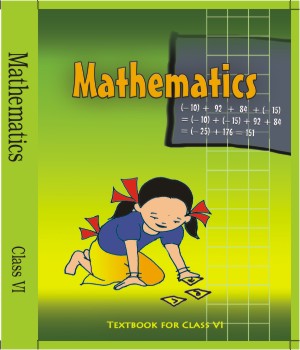Class 6 - Mathematics : Playing with Numbers
Exercise : 3.2

Top Block 1
NCERT Solutions Class 6 Mathematics Playing with Numbers Ex 3.2
Question : 1. What is the sum of any two:
(a)Odd number
(b)Even number
Answer :
(a) The sum of any two odd numbers is an even number.
Example: 1 + 3 = 4, 3 + 5 = 8
(b) The sum of any two even numbers is an even number.
Example: 2 + 4 = 6, 6 + 8 = 14
Question : 2. State whether the following statements are true or false:
(a)The sum of three odd numbers is even.
Answer : False
(b)The sum of two odd numbers and one even number is even.
Answer : True
(c)The product of three odd numbers is odd.
Answer : True
(d)If an even number is divided by 2, the quotient is always odd.
Answer : False
(e)All prime numbers are odd.
Answer : False
(f)Prime numbers do not have any factor
Answer : False
(g)Sum of two prime numbers is always even.
Answer : False
(h)2 is the only even prime number.
Answer : True
(i)All even numbers are composite number
Answer : False
(j)The product of two even numbers is always even.
Answer : True
Question : 3. The numbers 13 and 31 are prime numbe Both these numbers have same digits 1 and 3. Find such pairs of prime numbers up to 100.
Answer :
17 and 71; 37 and 73; 79 and 97
Question : 4. Write down separately the prime and composite numbers less than 20.
Answer :
Prime numbers: 2, 3, 5, 7, 11, 13, 17, 19
Composite numbers: 4, 6, 8, 9, 10, 12, 14, 15, 16, 18
Question : 5. What is the greatest prime number between 1 and 10?
Answer :
The greatest prime number between 1 and 10 is ‘7’.
Question: 6.Express the following as the sum of two odd numbers:
(a) 44
(b) 36
(c) 24
(d) 18
Answer :
(a) 3 + 41 = 44,
(b) 5 + 31 = 36,
(c) 7 + 17 = 24,
(d) 7 + 11 = 18
Mddle block 1
Question :7.Give three pairs of prime numbers whose difference is 2.
[Remark: Two prime numbers whose difference is 2 are called twin primes.]
Answer :
3 and 5;
5 and 7;
11 and 13
Question :8.Which of the following numbers are prime:
(a) 23
(b) 51
(c) 37
(d) 26
Answer :
(a) 23 and (c) 37 are prime number
Question :9.Write seven consecutive composite numbers less than 100 so that there is no prime number between them.
Answer :
90, 91, 92, 93, 94, 95, 96
Question : 10. Express each of the following numbers as the sum of three odd primes:
(a) 21
(b) 31
(c) 53
(d) 61
Answer :
(a) 21 = 3 + 7 + 11,
(b) 31 = 3 + 11 + 17 ,
(c) 53 = 13 + 17 + 23,
(d) 61 = 19 + 29 + 13
Question : 11.Write five pairs of prime numbers less than 20 whose sum is divisible by 5.
[Hint: 3 + 7 = 10]Answer :
2 + 3 = 5;,
7 + 13 = 20;,
3 + 17 = 20;,
2 + 13 = 15;,
5 + 5 = 10
Question :12. Fill in the blanks:
(a)A number which has only two factors is called a _______________.
(b)A number which has more than two factors is called a _______________.
(c)1 neither _______________ nor _______________.
(d)The smallest prime number is _______________.
(e)The smallest composite number is _______________.
(f)The smallest even number is _______________.
Answer :
(a) Prime number, (b) Composite number, (c) Prime number and composite number, (d) 2, (e) 4, (f) 2
